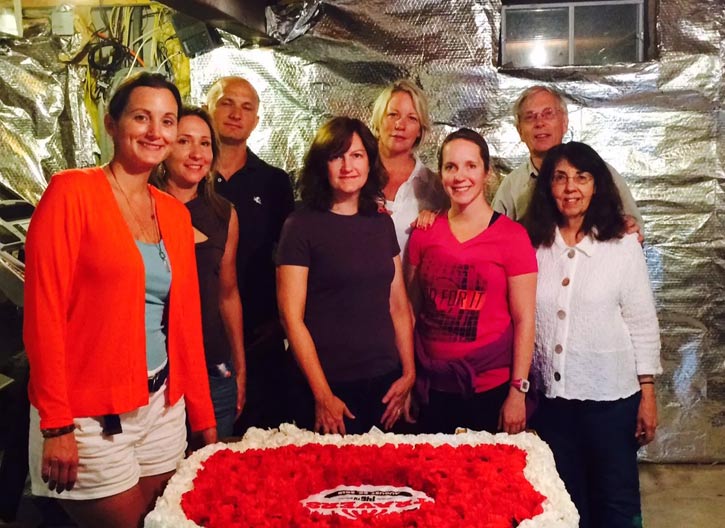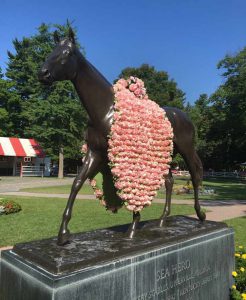If you’ve ever been to Travers Day at Saratoga, you may remember seeing the Travers Stakes winner draped in a beautiful floral blanket. Saratoga native Susan Garrett is the creator of those blankets, and this year, she will be making the blankets for the prestigious Belmont Stakes (which could result in a Triple Crown winner!) and six other stakes races that will be run on June 9. We asked Susan how she does it, what her process is, and how she became a key part of this great horse racing tradition.

How long have you been making floral blankets?
I was asked to make the first blanket for Travers back in 1994.
What inspired you to start making them?
I had a flower shop and realized there wasn’t a winner’s blanket for Travers, which is the oldest stakes race in the country. I thought, “Why?” There’s no class you can take to learn about floral blanket making, so the process has been kind of trial and error.
Is there any significance behind the types of flowers you use?
The carnation is the Belmont flower. The race is 150 years old, and I don’t recall them ever using a flower other than carnations. I started using red and white, Saratoga colors, which became a tradition.
How many flowers are used to make a blanket?
750, give or take. But when I’m using the pink Marylou Whitney roses, they’re larger, so I can get away with about 450 to 500. It’s important to keep the flowers tight in a blanket.
What is your process for making a blanket?
I start by cutting a pattern. I have a few people helping me on the blankets, and we all go back and forth on each side. The flowers are set with a waterproof glue and are then sewn on. We also have to sew the quilt and attach the emblems, which are made by Walton’s in Saratoga.
How long does it take to make a blanket?
We’ve pretty much gotten it down to a science now! It takes about 4 to 5 hours on each Belmont blanket.
Has the design changed over the years?
Of course it’s important that the blanket is made to fit a horse properly: narrow in the center and long straight down. The blankets have changed in size and shape over the years, typically longer and tapering at the end.

Where do the winner’s blankets go when the race is over?
The winner of the race gets to decide. It’s a part of their trophy. Some winners will drape it over their shed row, some will raffle it, and some will wear it. I’ve even heard of winners freeze drying the blanket and putting it in a shadow box. It’s completely up to them!
What do you do when you aren’t working on the winner’s blankets?
A lot! Right now I’m planning Taste of Wilton, which is a part of the Bicentennial Celebration. I also run a food blog at SusanSpouts.com.
What’s your favorite part about making the blankets? Designing? Building? Seeing them presented?
Seeing them presented, definitely. When I was making the first blanket, I knew people who just wanted to be a part of it — to help cut and thread. They didn’t even have to be racing fans! I think the tradition just makes you feel like you’re a part of history. It’s a great feeling.



